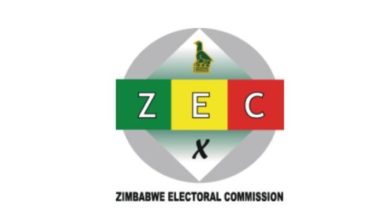Community participation key to reducing wildlife crimes

Improving community attitudes towards conservation and making them guardians of the environment can reduce wildlife crimes, conservationists have said.
Their participation in managing the environment is key, as locals also adopt management behaviours that lessen human and wildlife conflict, where animals pose a direct and recurring threat to the livelihood or safety of people.
Zimbabwe Parks and Wildlife Management Authority (ZimParks) Principal Wildlife Intelligence Officer, Amos Gwema, said the participation of local communities is essential for the success of conservation initiatives and in tackling wildlife related criminals.
“We get all the information by working with the community, as poachers come from the community and dispose of wildlife products there,” said Gwema to journalists at a conservation workshop in Victoria Falls recently.
“Before, the community was not well involved in conservation and would fold their arms saying ‘looking after wildlife was the duty of ZimParks, police or the government but my approach is to work with the community. Together we’ve made considerable achievements.”
Gwema, who is responsible for wildlife crimes investigation and intelligence at ZimParks, said the authority has made several efforts to educate communities on the importance of conservation.
“We have been going to communities with ex-convicts, poets, drama clubs, teaching the community about the dangers of committing wildlife crime. I am happy to advise there has been positive feedback,” he said, noting a community close to Hwange recently found a dead elephant and reported the matter instead of taking the ivory to sell.
“Law enforcement agencies recovered the ivory and to say ‘thank you’ to the community, we engaged one of our key stakeholders Bhejane Trust who paid that community who supplied the information. This shows the community is taking a positive approach towards causing conservation, instead of thinking of selling the ivory.”
However, the ZimParks official lamented that outsiders often took advantage of communities, by forcing them into crime.
“People from urban areas go to them and say, ‘if you give us ivory, we will give you so much money’,” he highlighted, citing the 2013 cyanide poisoning case where over 300 elephants at Hwange National Park were killed, as a prime example.
“Where did we get information? The community is the one who informed us that there was this vehicle and told us the homestead it was parked in. We searched the homestead, recovered cyanide and the case opened up leading to the arrest of 23 persons in 2013.”
Gwema said since the poisoning of elephants was a national disaster, all the 23 accused from Tsholotsho, mostly men and one woman, were sentenced to not less than 14 years each.
“The minimum sentence for ivory is nine years but the magistrate can sentence up to 20 years so the sentence was within the range as it was a national problem.”
He also added that investigations revealed a cartel was working with the 23.
“That vehicle belonged to people from Bulawayo. They were the ones who brought the cyanide and taught the community that ‘the easiest way to kill an elephant is to use cyanide,” Gwema said.
“Yes, we traced the people from Bulawayo and arrested them but they just paid a fine and were set free because during that time possession of cyanide was three months imprisonment or pay a fine. We couldn’t find ivory in their possession.”
Unfortunately, Gwema noted the 23 Tsholotsho locals were jailed as they were found with ivory from elephants in their possession.
“They were waiting to give the ivory to those people from Bulawayo. In the end, they were the ones with severe sentences while those ones are still out till now,” said the ZimParks official.
“What happens is people tell the community, ‘If you get ivory, we buy it for US$50 per kilogramme’ and an average sub-adult elephant can have 20 to 30 kilogrammes of ivory. If you multiply $50 by 30 kilogrammes it means US$1 500 and to the villagers, it’s a lot of money.”
According to the ZimParks official, the official value of ivory is US$250 per kilogramme.
Gwema noted that wildlife stakeholders also assisted the authority behind the scenes by giving incentives to informants.
“We do have more or less a contract that if you assist us, we pay you this way. It is unfortunate the government is not giving attractive rewards hence the involvement of the stakeholders behind the scene,” he said.
Victoria Falls Wildlife Trust, Wildlife Manager, Roger Parry concurred that communities were vital in making sure conservation thrived and the organisation came up with a concept called ‘community guardians’ where locals played an active role in mitigating against human wildlife conflict.
“Historically, a lot of communities used to think wildlife is someone else’s problem and would let their cattle roam freely but the community guardians are changing the way people think about human and wildlife conflict. They are becoming responsible for that conflict. They are the ones who live with the wildlife and (better to) have (mitigating) tools rather than relying on someone else,” he said.
“The community guardians have communities chasing lions and are looking after cattle, doing protective mobile bomas showing that people are starting to grasp that the concept for sustainability is very important.”





